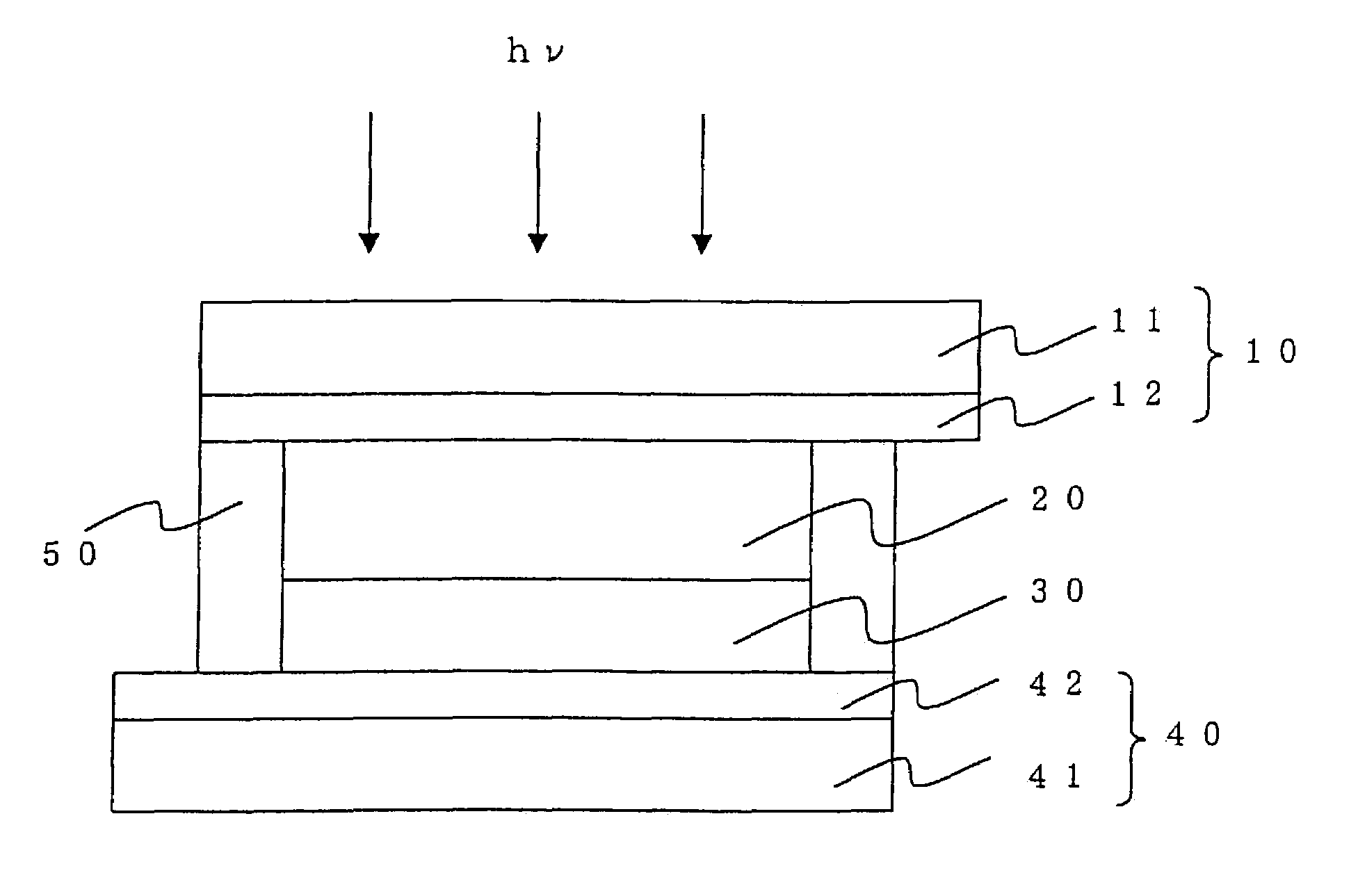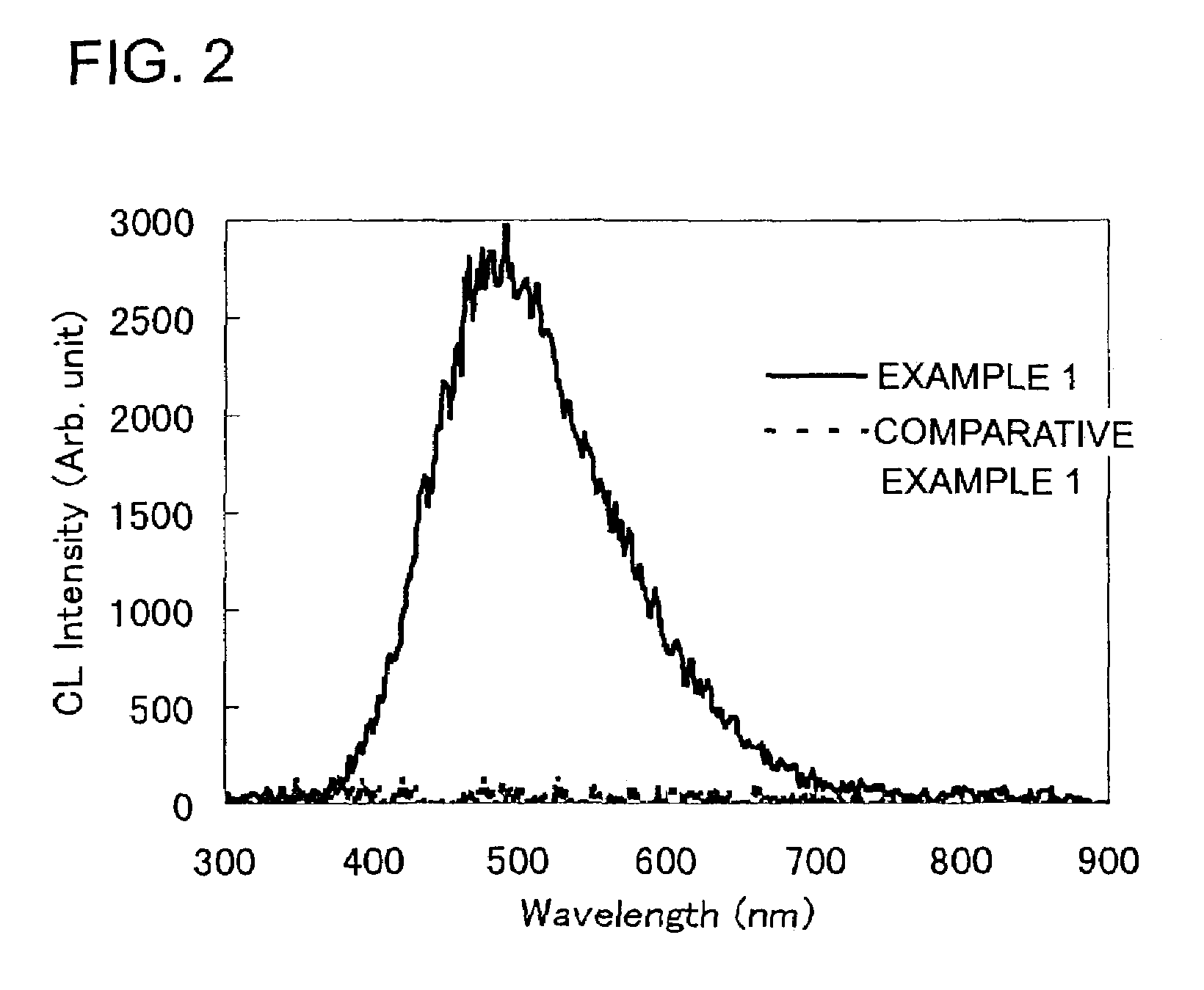Photovoltaic cell including porous semiconductor layer, method of manufacturing the same and solar cell
a photovoltaic cell and semiconductor technology, applied in the field of photovoltaic cells including porous semiconductor layers, a manufacturing method of the same and a solar cell, can solve the problems of high cost for manufacturing silicon substrates, unsolved problems, and low yield, and achieve high yield, high yield, and high yield.
- Summary
- Abstract
- Description
- Claims
- Application Information
AI Technical Summary
Benefits of technology
Problems solved by technology
Method used
Image
Examples
example 1
[0095]As shown in FIG. 1, a photovoltaic cell according to this example includes a porous semiconductor layer 20 formed on a conductive support 10, on which a photosensitive dye is adsorbed, a counter electrode support 40, a charge transport layer 30 filled between the porous semiconductor layer 20 and the counter electrode support 40 and a sealing material 50 sealing the sides thereof. The indication hv in FIG. 1 signifies light.
[0096]In this example, explanation is given of the case where the cathode luminescence property and the haze rate H of the porous semiconductor layer 20 are controlled. Also explained are experimental results in which improvement of the property was achieved by appropriately selecting a combination of a specific surface area S of the porous semiconductor layer, the haze rate H and surface density c.
[0097]The conductive support 10 was made of a glass substrate 11 on which a thin film of fluorine-doped tin oxide (SnO2:F) was formed by sputtering as a transpar...
example 2
[0111]A photovoltaic cell according to this example is the same as that of Example 1 except that the transparent electrode layer 12 (a thin film of SnO2:F) having a flat surface and the haze rate H of about 0 was replaced with a transparent electrode layer 12 (a thin film of SnO2:F) having a rough surface as shown in FIG. 7 and the haze rate H of about 0 to 30%. The roughness formed on the surface of the transparent conductive layer has Rmax of about 100 to 400 nm.
[0112]In this example, explanation is given of experimental results in which the property was improved by appropriately selecting a combination of the specific surface area S, the haze rate H and the surface density c of the porous semiconductor layer.
[0113]Other components than the transparent conductive layer 12 were formed in the same manner as Example 1 and hence detailed description thereof is omitted.
[0114]The transparent electrode layer 12 was formed in the following manner. First, in the same manner as in Example 1...
example 3
[0136]A photovoltaic cell according to this example includes, as shown in FIG. 14, a conductive support comprising a support 1 and a conductive film 2, a porous semiconductor layer 3 formed on the conductive support 1, on which a photosensitive dye is adsorbed, a counter electrode support comprising a support 5 and a conductive film 6 and an electrolyte layer filled as a charge transport layer 4 between the porous semiconductor layer 3 and the counter electrode support. The sides thereof are sealed with a sealing material 7.
[0137]First, on a glass substrate used as the translucent support 1, an SnO2 film was formed by sputtering as a translucent conductive film 2 of 0.1 μm thick.
[0138]Then, titanium oxide paste was coated on the conductive film 2, which was dried and baked to form a titanium oxide film (the porous semiconductor layer 3).
[0139]The titanium oxide paste was prepared as follows.
[0140]To 750 mL of 0.1 M nitric acid solution (manufactured by Kishida Chemical Co., Ltd.), 1...
PUM
 Login to View More
Login to View More Abstract
Description
Claims
Application Information
 Login to View More
Login to View More - R&D
- Intellectual Property
- Life Sciences
- Materials
- Tech Scout
- Unparalleled Data Quality
- Higher Quality Content
- 60% Fewer Hallucinations
Browse by: Latest US Patents, China's latest patents, Technical Efficacy Thesaurus, Application Domain, Technology Topic, Popular Technical Reports.
© 2025 PatSnap. All rights reserved.Legal|Privacy policy|Modern Slavery Act Transparency Statement|Sitemap|About US| Contact US: help@patsnap.com



